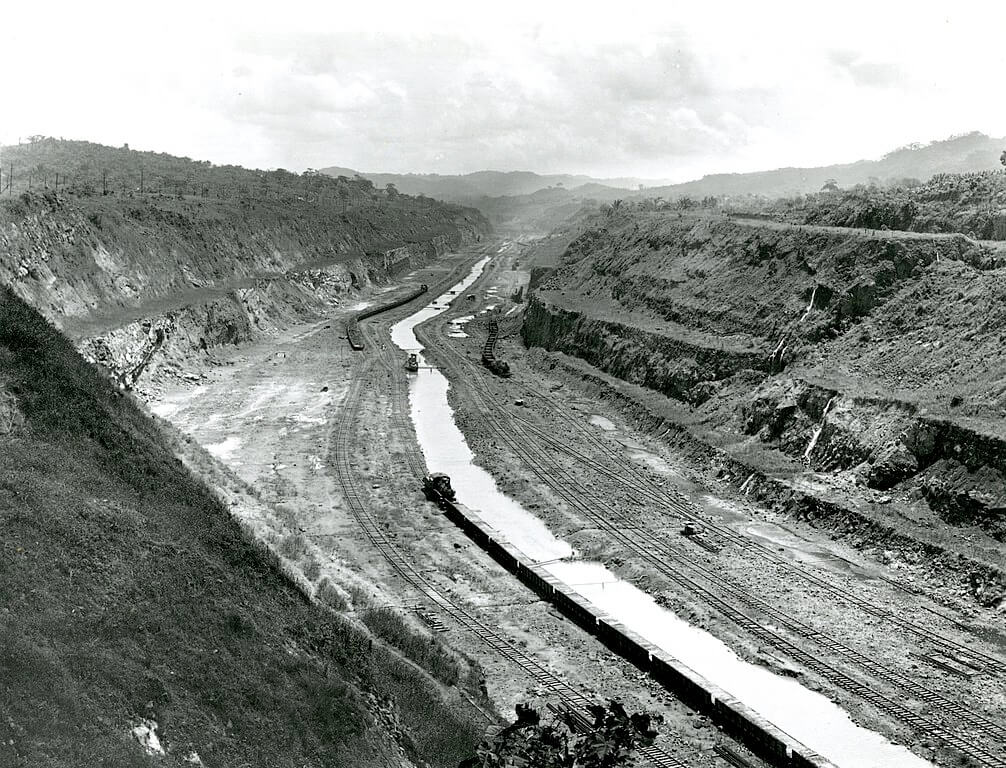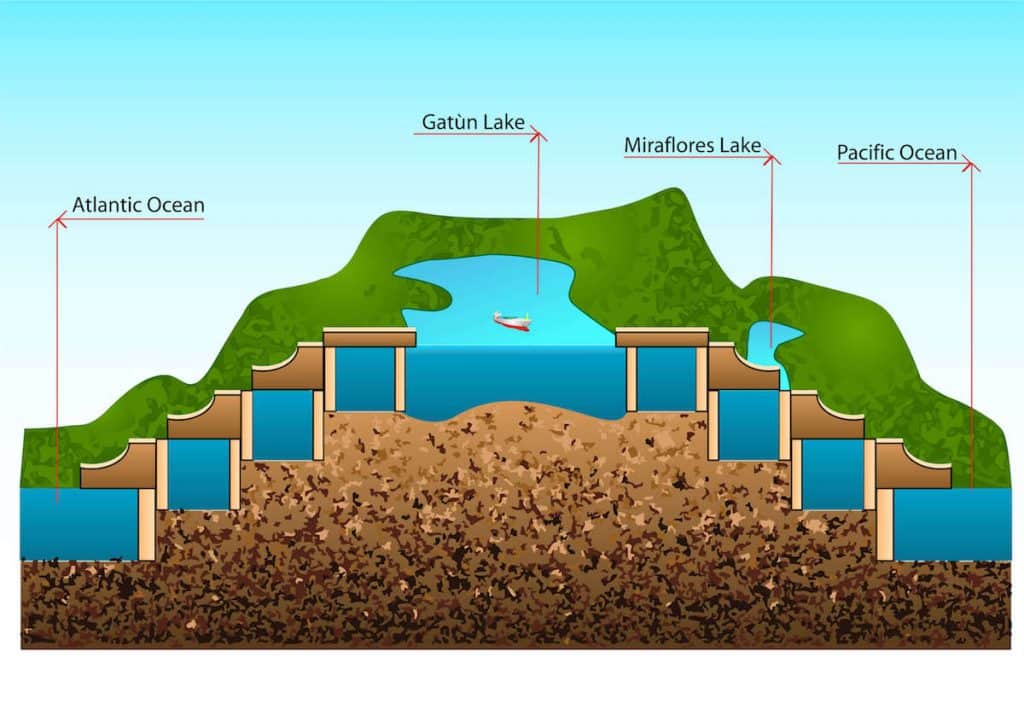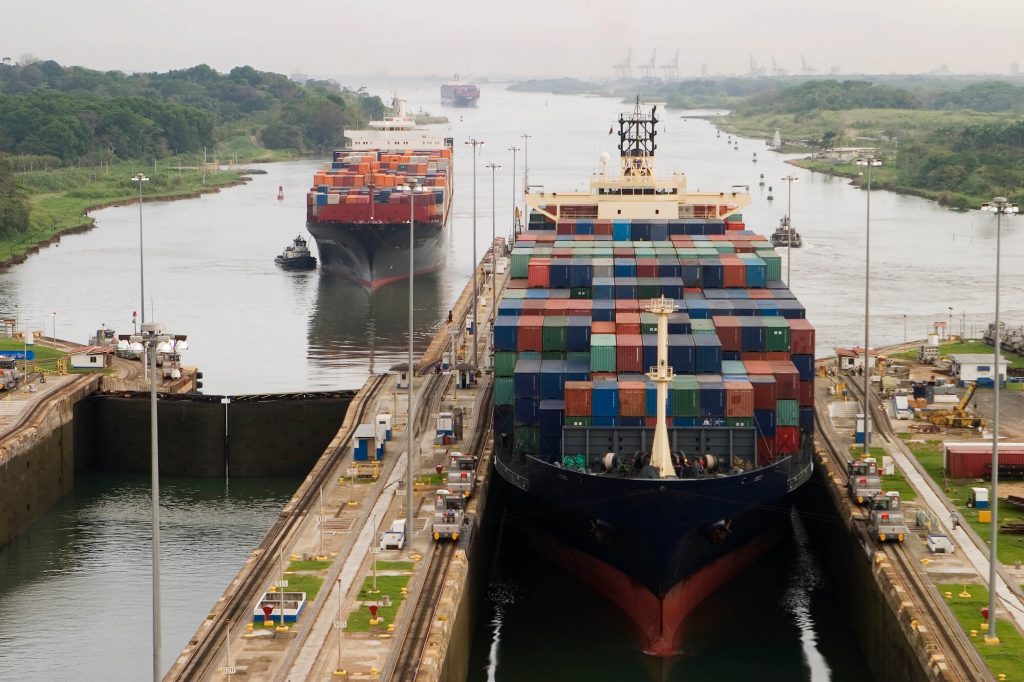1. Who Built The Panama Canal?
Everyone knows that the Panama Canal was built by the United States of America, but very few know that work was in fact started by the French. It was Mr Ferdinand de Lesseps, a French diplomat who first started the work back in 1881. The work had to be stopped in the year 1894 because yellow fever and malaria claimed the lives of an estimated 22,000 workers and spending nearly USD $ 287 million bankrupted Mr Ferdinand de Lesseps.

The left over work was undertaken by Americans in the year 1904 after helping Panama cede from erstwhile ‘Greater Colombia’. Under the able leadership of Mr John Frank Stevens and later Major George Washington Goethals as chief engineer, they were able to complete the work in 10 years. It was on 15th August 1914, full two years before the target year of 1916, when the Panama Canal was officially inaugurated.
2. Which was the first vessel to cross the Panama Canal?
As per records available, the first ship to cross Panama Canal was SS Ancon. She was an American flag cargo and passenger ship owned by Boston Steam Ship Company. She was about 150 meters in length, 18 meters in beam, about 9600 Gross Registered Tonnage and drew a draft of about 8.8 meters. She played a very important role in building the canal by ferrying workers, construction material and notably massive amounts of cement from New York to Panama for construction of Panama Canal.
3. How much time is saved by crossing the Panama Canal?
Panama Canal was first envisioned by Charles V Holy Roman Emperor and king of Spain in the year 1534. He was convinced that a canal across the isthmus of Panama would greatly reduce the distance between Spain and Peru, thus giving them a military advantage over Portuguese. Though it took nearly four centuries for his dream to materialize, since its inauguration, Panama Canal has reduced the sailing distance from Atlantic to Pacific and vice versa by a huge 8000 nautical miles (approximately). If we sail with an average speed of about say 15 knots, then it will be 22 long days!
On the contrary, it takes just around 8 to 10 hours to cross the Panama Canal. Panama Canal not only saves money and time for owners and ship operators but in fact, it helps in saving huge amounts of CO2 emissions and thus helping the shipping industry to reduce its carbon footprint.
Panama Canal Facts Infographic:

4. How much does it cost to transit the Panama Canal?
Panama Canal authorities calculate tolls by using a system called Panama Canal Universal Measurement System (PC/UMS), which is based on international standard of vessel measurement established by International Convention of Measurement of Ships 1969.
To determine net Canal Tonnage a mathematical formula is applied for calculating the total ship’s volume. A net Canal tonnage is 100 cubic feet of volumetric capacity. Then depending upon whether the ship is laden or in ballast, the appropriate rate is applied. Warships and other Naval Auxiliary vessels are charged on the basis of their displacement tonnage. One displacement ton is equivalent to one long ton or 35 cubic feet of salt water.
For practical purpose, a typical IMO type III chemical tanker of around 50,000 DWT, laden pays around USD $ 135,000 in toll, whereas an LNG tanker of neo Panamax size 83,000 DWT laden pays around USD $ 260,000 in toll. The smallest amount of toll was paid by Mr Richard Halliburton in the year 1928 of USD $0.36 for swimming across the canal.
5. How do the locks at the Panama Canal work and why are they there in the first place?
There is a total of twelve locks in the Panama Canal system. From Pacific entrance to the canal, the first set of locks are known as Miraflores locks. It is a two-step flight which lift or lowers ships 54 feet above the mean sea level. Then comes Pedro Miguel locks.
It is a single step flight which lift or lowers ships 31 feet above mean sea level. Pedro Miguel locks then lead to Gatun lake via Culebra cut. The final lock is known as Gatun Lock. It is a three-step flight which lift or lowers ships 85 feet above the mean sea level and opens to the Atlantic Ocean. All three sets of locks are in a pair so as to ensure at least in principle for ships to pass in opposite directions.
The main purpose of these locks is to ensure that Gatun lake does not flow outwards to the Atlantic or the Pacific Ocean. This ensures that there is sufficient draft available at all times for ships to pass.

Locks work on the basic principle of gravity and floatation. The height difference between Gatun lake and Pacific & Atlantic Oceans causes water to flood and empty the locks through culverts. Huge valves control the flow of water. The entire system is managed by a control centre located at respective lock gates. When lock gates flood, the ship which is floating inside lock gate rises with rising water level and then enters the consecutive lock gate for further rise. The same technique is used to lower the ship by emptying the lock gates.
6. What is the maximum draft allowed to transit the Panama Canal?
Every year ACP (Autoridad del Canal de Panamá) or Panama Canal Authority issues notice giving details of size and draft limitation for vessels intending to transit the Panama Canal. With the opening of new locks for commercial traffic since 26 June 2016, there are different requirements for ships transiting old and new locks. Old locks are referred to as Panamax locks whereas new locks are referred to as neo-Panamax locks.
As of year, 2018 maximum draft for Panamax locks is 12.04 meters (39 feet 6 inches) Tropical Fresh Water (TFW). Tropical Fresh Water (TFW) is 0.9954 gms/cc at 29.4°C (85°F). Maximum draft for neo-Panamax locks is 15.2 meters (49.87 feet) Tropical Fresh Water (TFW).
7. What are pre-arrival preparations required before transiting the Panama Canal?
It is a known fact that the Panama Canal is one of the most important waterways in the world. To ensure continued safe transit of vessels there are very strict regulations which control the entire transit system of the Panama Canal. Canal transit should be booked via the agent, who would also send the list of pre-arrival documents. These documents are required for vessel clearance upon arrival.
Vessels arriving the Atlantic or Pacific anchorages are required to contact the Port Entry Coordinator (PEC) in Cristobal or Flamenco signal stations on VHF Channel 12 before the evolution takes place. Upon arrival at either Atlantic or Pacific anchorages, Panama Canal Authority (ACP) inspectors board the vessel to carry out pre transit inspection. It is important that all bridge equipment, steering gear, mooring winches and associated equipment, main engine and various other auxiliary machines are working in good order so as to avoid any delays or rejection during ACP inspection.

Image credit: micanaldepanama.com
Panama Canal is in ECA (Emission Control Area) thus before transit change over from HFO (Heavy Fuel Oil) to LSMGO (Low sulphur marine gas oil) may be required depending on ship type. Ship’s crew should also be familiar with PCSOPEP (Panama Canal Ship Board Oil Pollution Emergency Plan). PCSOPEP notification drill and oil spill drill in accordance with PCSOPEP should also be carried out prior arrival.
8. Navigation in Panama Canal And Its Challenges
Navigating the Panama Canal can be challenging. Though Panama Canal pilots are known for their thorough professionalism and skilled navigation, still a responsibility for safe navigation lies with the ship’s master and crew.
Special care should be taken especially when a vessel is in the lock and the locked gate open. The sudden gush of water creates an effect which local pilots call ‘The Hydraulic Effect’, this pushes the vessel astern and full main engine power is required to maintain the position. During this, the forward and aft station duty officer should be in constant communication with bridge and should inform the condition of lines passed by mules.
The other section where special care should be exercised is the ‘Culebra Cut’ also formally known as the ‘Gaillard Cut’. This is a narrow stretch of Panama Canal which cuts through the continental divide in Panama. Sharp cut and narrow passage make it tricky and challenging.
9. Honorary Pilots
It is interesting to note that Panama Canal Authority (ACP) appoints few honorary pilots, generally masters, who have successfully completed 100 transits through Panama Canal. Most recently Capt. Sonjoy Sen of WWL (Wallenius Wilhelmsen group) received honorary Panama Canal Pilot’s Licence back in 2015.
Commodore Ronald Warwick master with Cunard Liners who has commanded RMS Queen Marry II was awarded honorary pilot of Panama Canal by Panama Canal Authority (ACP) for crossing Panama Canal for more than 50 times.
10. Competitors of the Panama Canal
Although presently the Panama Canal is the only canal between the Pacific and the Atlantic Ocean, there is also a proposal for another canal which would cut across Nicaragua. It is to be known as the Nicaragua Canal.
Back in 2006 President of Nicaragua Enrique Balaños announced his intention of building this canal. In 2012 Nicaraguan government together with Hong Kong Nicaragua Canal Development Investment Company (HKND Group) signed a memorandum of understanding in which HKND Group would finance the entire project and after completion of the project would operate it.
However, the Hong Kong Nicaragua Canal Development Investment Company (HKND Group) became bankrupt after 2015-16 Chinese stock market turbulence. This together with local and environmental activists protest brought this project to its knees. In spite of this present Nicaraguan government is committed for construction of this canal. If ever this project becomes a reality, it may give Panama Canal a serious competition.














